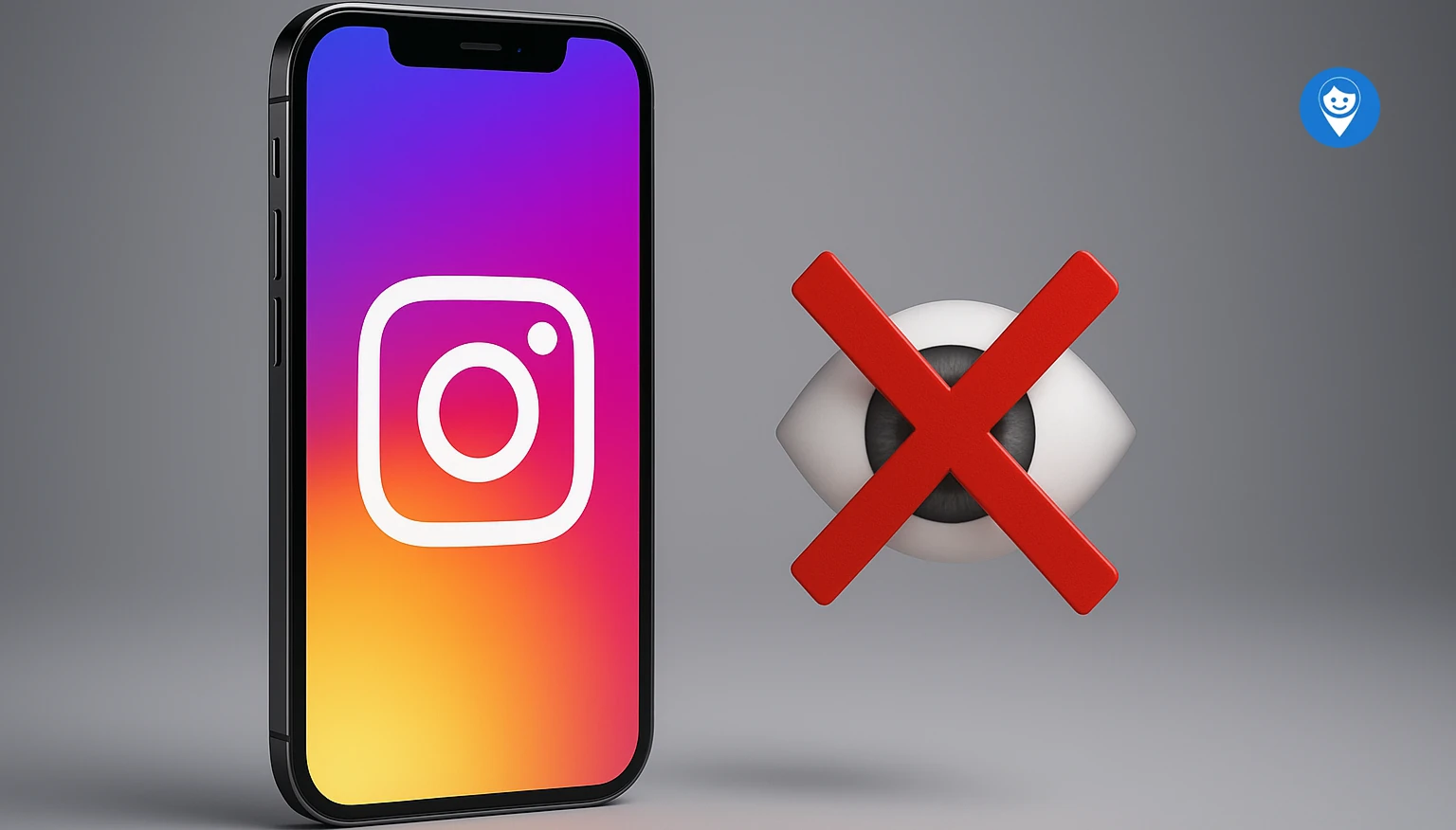In an age where social media shapes nearly every aspect of our children’s lives, it’s no surprise that teens are finding creative ways to maintain privacy—sometimes at the expense of parental oversight. Secret or secondary Instagram accounts (often known as “Finstas,” “spam accounts,” or “alt accounts”) are on the rise, and they can be a source of concern for any parent. While these private spaces can offer teens a sense of freedom and self-expression, they can also expose them to harmful content, cyberbullying, and risky interactions without your knowledge.
Below are ten clear signs your child might be operating a hidden Instagram account in 2025, along with practical steps you can take to address the situation constructively and compassionately.
1. Their Primary Account Activity Suddenly Drops
If you notice a sudden decline in your child’s posts, stories, or general engagement on their main Instagram profile, it could indicate they’ve shifted activity elsewhere. Teens craving a more private audience or experimenting with a new persona often migrate to a secondary account.
-
What to look for:
-
Fewer uploads, likes, or comments than usual
-
Lack of daily story updates (which used to be consistent)
-
Disconnection from close friends or family circle
-
-
Why it happens:
-
Desire to curate content for a smaller, trusted audience
-
Fear of judgment from parents or classmates
-
Exploration of identity away from “public” scrutiny
-
2. They Guard Their Phone with a New Passcode or App Lock
A sudden change in screen lock settings—or the installation of specialized app-lock software—can be a red flag. While privacy is important, extreme measures to hide Instagram specifically suggest there’s something they don’t want anyone else to see.
-
What to look for:
-
New passcode patterns
-
Biometric lock enabled where it wasn’t before
-
Third-party “App Locker” apps installed
-
-
How to approach it:
-
Have a calm conversation about digital privacy and respect
-
Set family guidelines for phone security that balance trust and supervision
-
3. Inconsistent or Vague Explanations of Their Social Media Time
When questioned about their screen time on Instagram, a child with a secret account may hesitate, provide fuzzy details, or insist they’re barely using the app. They might claim they’re busy with schoolwork when, in fact, they’re jumping between multiple profiles.
-
What to look for:
-
Frequent “I don’t remember” or “I wasn’t on Instagram much” responses
-
Defensive reactions to questions about app usage
-
Unexpected denial of being online late at night
-
-
How to approach it:
-
Frame questions from a place of care, not accusation
-
Use screen-time reports from parental-control tools (e.g., Pinardin) to compare statements to actual usage
-
4. You Spot Mentions of Unfamiliar Handles in Conversations
Listening in—or more appropriately, casually overhearing—your teen mention an Instagram handle you’ve never seen before can be a strong clue. Teens often refer to friends’ alt accounts differently from their main profiles.
-
What to listen for:
-
“Oh, on @xyz_finsta we were joking…”
-
References to memes or inside jokes on a side account
-
Mention of followers or followers lists you don’t recognize
-
-
How to approach it:
-
Ask about these friends and accounts in an open-ended way (“Who’s @xyz_finsta?”)
-
Encourage them to introduce you to their online circle if they’re comfortable
-
5. Their Mood or Behavior Shifts After Private Chats
Secret accounts often come with private direct messages (DMs) where teens share personal thoughts, vent frustrations, or exchange risky content. If your child’s mood swings sharply after using their phone—especially immediately after checking messages—it could mean something unsettling is happening behind closed DMs.
-
What to look for:
-
Sudden irritability, anxiety, or withdrawn behavior
-
Checking the phone repeatedly and reacting emotionally
-
Locking themselves in a room to scroll
-
-
How to approach it:
-
Gently ask how they’re feeling and if someone online upset them
-
Offer support and remind them they can talk to you about anything
-
6. You Notice a New Browser Bookmark or App Cloner
To maintain a secret Instagram presence, savvy teens sometimes use browser-based Instagram or clone the app under a different name. If you find a new bookmark labeled generically (e.g., “Photos” or “Social”) or a seemingly innocuous app icon that opens Instagram, take notice.
-
What to look for:
-
Bookmarks like “Camera,” “Grid,” or “PicShare”
-
Instagram icon disguised with a different name
-
Third-party Instagram clients installed
-
-
How to approach it:
-
Ask your teen to show you all the apps on their phone, emphasizing safety scanning
-
Explain your role is to keep them safe, not invade their privacy
-
7. They Delete Their Browser History or App Cache Frequently
Constantly clearing history or cache—especially at odd times, like right after you ask to use their phone—can indicate they’re hiding an alternative social profile.
-
What to look for:
-
Browser settings showing forced “on exit” cache deletion
-
Frequent notifications that memory usage is low (indicating app data wiped)
-
Apps that clean other apps’ caches
-
-
How to approach it:
-
Discuss digital footprints and why it’s okay to have secrets, but also discuss safety
-
Propose a compromise: scheduled “privacy checks” where you review only together
-
8. Sudden Influx of New “Close Friends” Stories
Instagram’s “Close Friends” feature allows users to share stories with a select group. If your teen’s primary account suddenly has a high frequency of “Close Friends” stories—particularly with audiences you don’t know—it could signal the existence of a parallel audience on another account.
-
What to look for:
-
Multiple stories that disappear after 24 hours, seen by only a handful
-
Comments or reactions on stories you can’t trace to their known follower list
-
Stories tagged with “close friends” or private emojis
-
-
How to approach it:
-
Ask who is in their “Close Friends” circle and why it’s important
-
Encourage responsible sharing habits and explain potential pitfalls
-
9. They Experience Sleep Disturbances or Screen-Related Anxiety
Operating a secret account can be stressful. Teens juggling multiple identities may lose sleep from late-night scrolling or feel anxious about messages. Sleep quality is a powerful indicator of hidden online stress.
-
What to look for:
-
Nighttime noise from phone alerts
-
Complaints about insomnia or feeling tired at odd hours
-
Refusal to discuss nighttime phone habits
-
-
How to approach it:
-
Institute a phone “bedtime”—all devices in a family charging station by a set hour
-
Share research on blue light and sleep, framing it as health advice
-
10. You Find Evidence in Shared Devices or Synced Apps
Sometimes secret accounts slip through synced devices. If your child logs into Instagram on a tablet or old phone, you might stumble across another username in the app’s account switcher.
-
What to look for:
-
Multiple Instagram logins saved in the account switcher
-
Tablet or secondary device paired with their phone
-
Browser auto-fill showing unknown credentials
-
-
How to approach it:
-
Review device settings together during a “tech check” session
-
Use parental-control dashboards (like Pinardin) that show all Instagram installations
-
What to Do Next: A Compassionate Plan of Action
Discovering that your child has a hidden Instagram account can feel like a breach of trust, but it’s also an opportunity to strengthen your relationship. Here’s a step-by-step plan:
-
Pause and Reflect
- Take a moment to manage your emotions. Your goal is to support, not punish.
-
Initiate a Calm Conversation
- Choose a neutral time and place. Avoid ambushing them right when you’ve discovered the account.
-
Express Concern, Not Accusation
- “I’ve noticed some changes in your Instagram use. I’m worried about your safety and well-being.”
-
Listen Actively
- Give them space to explain their reasons. They might be exploring identity, escaping pressure, or feeling misunderstood.
-
Educate on Risks
- Discuss online privacy, potential for cyberbullying, exposure to inappropriate content, and the permanence of digital footprints.
-
Set Agreed Boundaries
- Co-create rules that respect their need for privacy (e.g., one secondary account is okay if you share the username).
-
Leverage Parental-Control Tools
- Introduce tools like Pinardin, which can discreetly monitor screen time, app usage, and alert you to new app installations—without reading personal chats #. This helps you stay informed without spying.
-
Encourage Open Dialogue
- Regularly check in about their online experiences. Reinforce that they can come to you with problems or bad interactions.
-
Promote Healthy Alternatives
- Suggest journaling, face-to-face meetups with friends, or creative outlets as ways to express themselves offline.
-
Revisit and Adjust
- Technology and trust evolve. Schedule monthly “tech talks” to review how the arrangement is working for both of you.
Secret Instagram accounts aren’t inherently malicious—many teens use them to connect more authentically with close friends. However, as a parent, it’s crucial to ensure their digital freedom doesn’t compromise their safety. By recognizing the ten signs outlined above and adopting a compassionate, collaborative approach, you can maintain trust, safeguard your child’s well-being, and guide them toward responsible social media habits in 2025 and beyond.


Comments